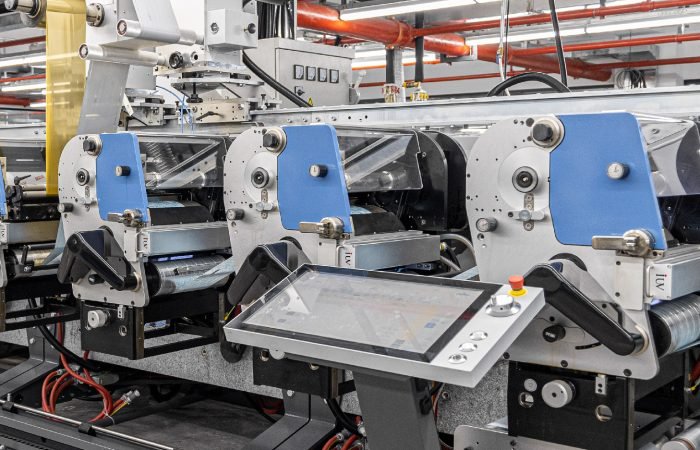Heat-sensitive substrates like thin films, adhesives, and specialty papers demand precision in UV curing. Traditional mercury lamps often fail here—they generate excess heat, warp materials, and create inconsistent results. LED UV curing solves these problems, but only when you optimize the process for specific applications. Let’s break down how to nail this in label, flexo, offset, and narrow-web printing.
1. Why Heat Sensitivity Matters in Printing
Delicate materials—think PET films, thermal papers, or pressure-sensitive labels—degrade under high heat. Warping, discoloration, or adhesive failure can scrap entire batches. LED UV systems emit minimal infrared radiation, operating at 40–50°C vs. mercury lamps’ 80–120°C. This lets you cure inks/coatings without frying the substrate.
Pro Tip: Test your material’s thermal threshold first. Use a IR thermometer to monitor surface temps during curing trials.
2. LED UV’s Secret Weapons for Delicate Jobs
- Instant On/Off Control
No warm-up time. Adjust intensity in real-time to match line speeds (handy for variable jobs in narrow-web presses). - Narrow Wavelength Targeting
LEDs emit at 365–405 nm, aligning perfectly with photoinitiators in low-migration inks. Less energy waste, faster curing. - Zoned Curing
Multi-LED arrays let you apply higher energy to tough coatings and gentler doses to heat-sensitive areas.
Case Study: A label printer using LED UV cut waste by 23% on shrink-sleeve PET labels by curing at 42°C vs. mercury’s 78°C.
3. Application-Specific Tweaks
Label Printing
- Challenge: Adhesive bonding on thin films.
- Fix: Use dual-cure adhesives. Cure the top layer with LED UV (low heat), then let residual chemistry bond the adhesive.
Flexo Printing
- Challenge: Halftones curing unevenly on heat-sensitive stocks.
- Fix: Pair high-power LED lamps (6–8 W/cm²) with low-viscosity inks. Short dwell times prevent heat buildup.
Offset/Sheetfed
- Challenge: Curing thick coatings without warping coated papers.
- Fix: Hybrid systems. Apply LED UV for base layers, then IR for final cure (if substrate allows).
Narrow-Web
- Challenge: Fast job changes on substrates like BOPP or PVC.
- Fix: Install adjustable LED arrays. Dial in 2–4 W/cm² for films, 5–7 W/cm² for paper-based tags.
4. 5-Step Setup for Flawless Curing
- Match Wavelength to Ink
Check your ink’s spec sheet. 395 nm LEDs work for 90% of formulations. Specialty inks (e.g., white) may need 365 nm. - Calibrate Energy Density
Aim for 0.8–1.2 J/cm². Use a radiometer to verify. - Adjust Lamp Distance
Keep LEDs 10–15 cm from substrate. Closer = higher intensity but more heat. - Optimize Line Speed
Start slow (10–20 m/min), then ramp up until curing gloss stays consistent. - Post-Cure Check
Rub tests, tape tests, and solvent wipes don’t lie.
5. Common Pitfalls (and How to Dodge Them)
- Under-Curing
Symptoms: Tacky surface, poor adhesion.
Fix: Boost energy density by 20% or slow line speed by 15%. - Overheating
Symptoms: Substrate curling, ink cracking.
Fix: Install heat sinks on LED modules or add air knives for cooling. - Ink Bleeding
Symptoms: Colors mixing before curing.
Fix: Switch to faster-reacting photoinitiators (e.g., TPO-L instead of ITX).
6. ROI Talk: Why Printers Are Switching
- Energy Savings: LEDs use 60–70% less power than mercury systems.
- Downtime Cuts: No bulb replacements. 20,000 hour lifespan.
- Eco Perks: No ozone, no mercury waste.
A flexo shop in Germany slashed energy costs by €18k/year after switching to LED UV for their heat-sensitive wine labels.
Final Word
LED UV isn’t magic—it’s physics. By aligning wavelengths, energy output, and substrate limits, you can cure even the fussiest materials perfectly. Start with small trials, track metrics religiously, and scale what works. The tech’s here. The rest is fine-tuning.
Need a deeper dive? Audit your current setup with an LED radiometer and spectral graph of your inks. Data beats guesswork every time.












